Cafe culture: Lautrek is obsessed with money, Van Gogh is anxious
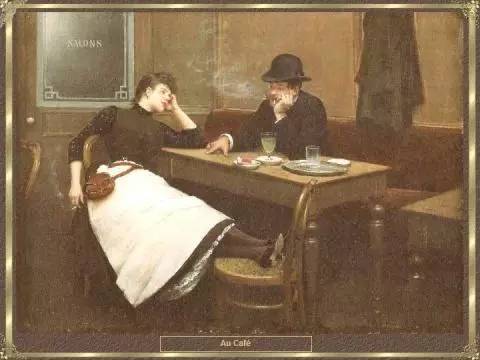
The head picture of this article: Broder's cafe. In the works of Impressionist painters, what is the story of the cafe?
For professional baristas, please follow the coffee workshop (Wechat official account cafe_style)
Andre Gide, a writer Xiaoyu likes very much, describes an Arab cafe in "Food on Earth": noisy, cheerful, Arabian Nights, singers and dancers. The wind from the night is warm and mixed with strange fragrance. I don't remember Kidd, and when I vaguely remember him, I often mix him with Lorga's Spanish ballads. But on the wonderful night of Lorga, what lingered was the shadow of death.
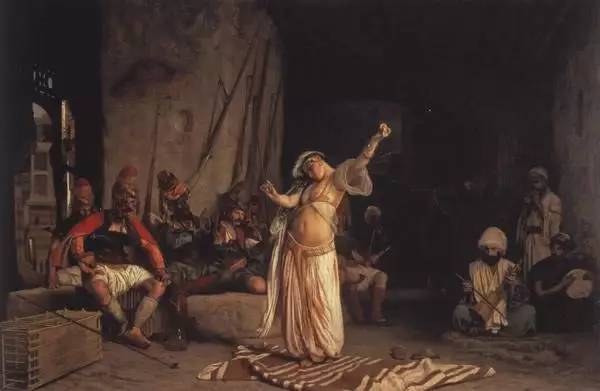
Jerome "belly dancer", a dancer dances on a square carpet in a dim Egyptian cafe.
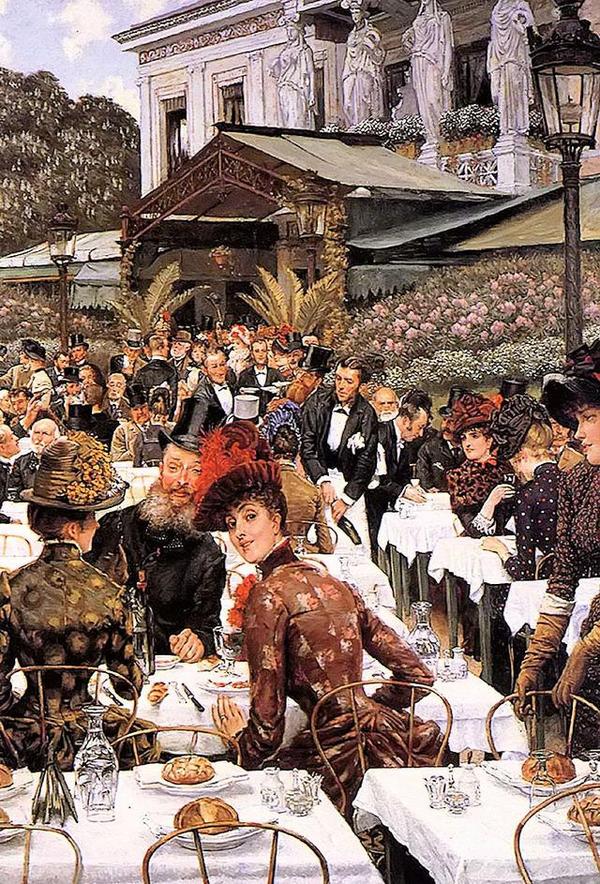
James Tesso, "female artists"
When it comes to cafe culture, we have to mention French cafes. Whether it is Montmartre cafes haunted by impressionists such as Monet, Gauguin, Van Gogh, or Latin cafes frequented by writers and philosophers such as Hemingway, Sartre and Beckett, they all reveal a strong humanistic atmosphere. Those famous "cafe writers" even claim that their lifelong careers are first regular cafes, followed by writers, and going to cafes is not for coffee, but a way for them to exist.
Today, we continue to talk about the artist's cafe.
If you are interested in the last issue, you can poke: drinking coffee with Manet: the relaxed and ambiguous nature of the cafe 1 | Zhang Xiaoyu
1/3
The cafe serves as the existence of a new cultural field.
Coffee shop is not only the core of life in Paris in the 19th-20th century, but also the existence of a kind of culture and art.
In essence, the existence of cafes is a kind of field culture. Throughout the 19th century in Paris, intellectuals, as loyal consumers of cafes, recorded this life with their own artistic creations. Cafes play a new and modern role in their lives, where artists conduct artistic exchanges and discussions. The cafe has become a modern force to replace the power of the college and rebuild a new public space of art and culture.
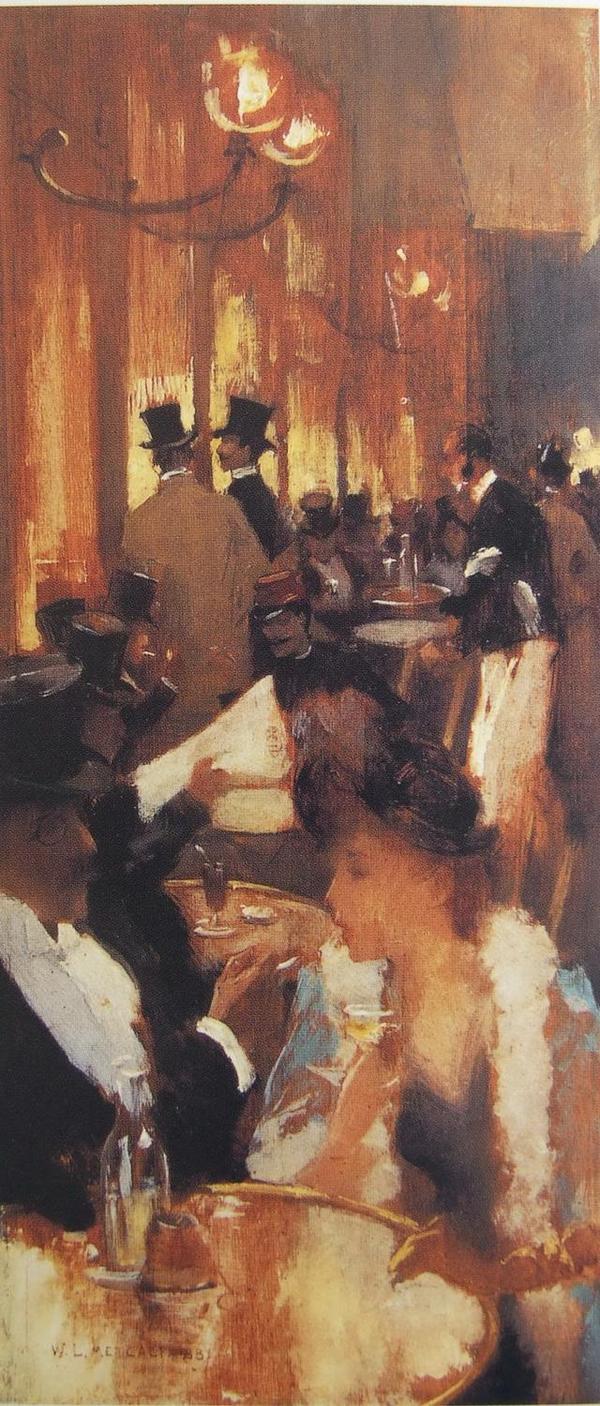
Willard Metcalf "in the Cafe"
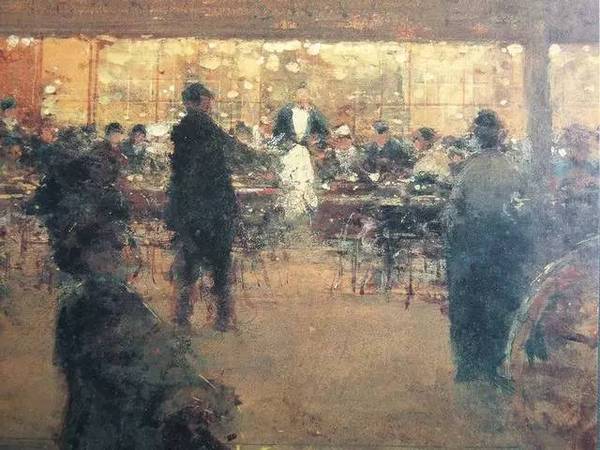
Luigi Loir Night Cafe
The cafe theme has been expressed in many Impressionist painters because it is a symbol of modern life and is very consistent with the modern art they admire and boast.
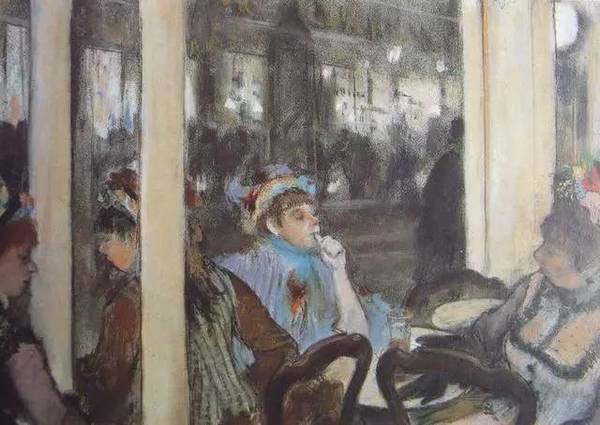
Degas "the woman on the balcony of the Cafe"
Manet shows a part of the life of a bourgeois eldest son artist who is a playboy in his cafe theme. Therefore, in Manet's works, the focus is more on the cafe with a certain intellectual clustering style, rather than the beer pub loved by the working class and bohemians. But for Manet, who records all kinds of people in society, he shows more about the social function of the cafe as a commercial space.
In Van Gogh's works, the cafe is a restless and disturbing existence; in Renoir's works, it shows the transition between old and new Paris, as well as contemplation of class differences; in Lautrec's works, the cafe is more of a prom place for Montmartre.
In Paris in the 19th-20th century, cafes can have so many refraction of cultural and artistic life.
2/3
Lautrek's Cafe: very amorous.
As the painter who can best show the extravagant life of Montmartre in the 19th-20th century, he must be Lautlek of Impressionism, who is called "Montmartre lover".
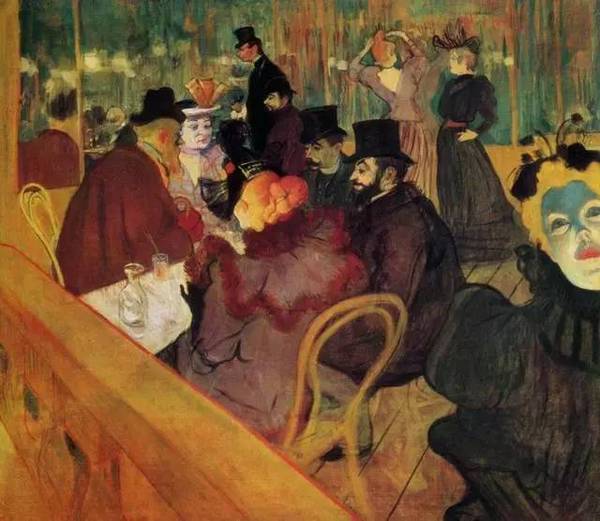
Lautrek's Moulin Rouge Ball
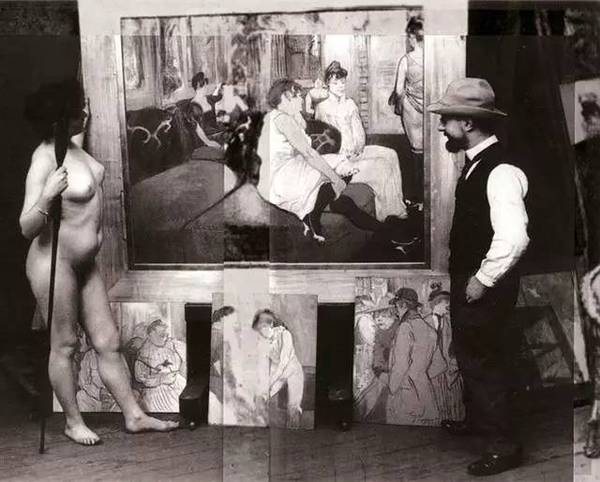
The dancer prototype of the series of oil paintings at Lautrek Moulin Rouge.
Lautrek uncontrollably soaked in cafes and hotels, frequently in and out of Moulin Rouge balls and various wind and moon venues, so in his paintings, the cafe also brought a lingering ambiguous background.
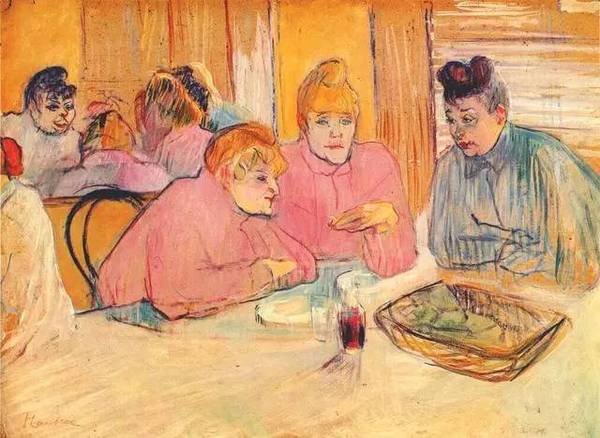
Lautrek, "the lady at the coffee table."
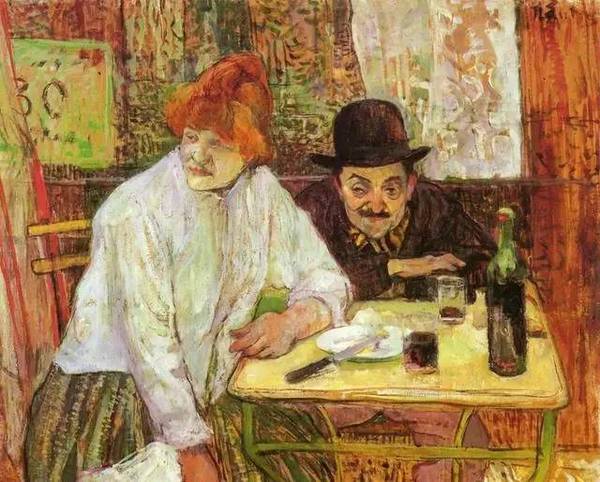
Lautrek "in the Cafe."
The painter "in the Cafe" depicts a custom scene of the underworld in Paris-an old Ji woman and a lover, sitting at a small table drinking. Women put their feet together casually with frivolity and vulgarity. And in a place like a cafe, there's nothing wrong with such a scene.
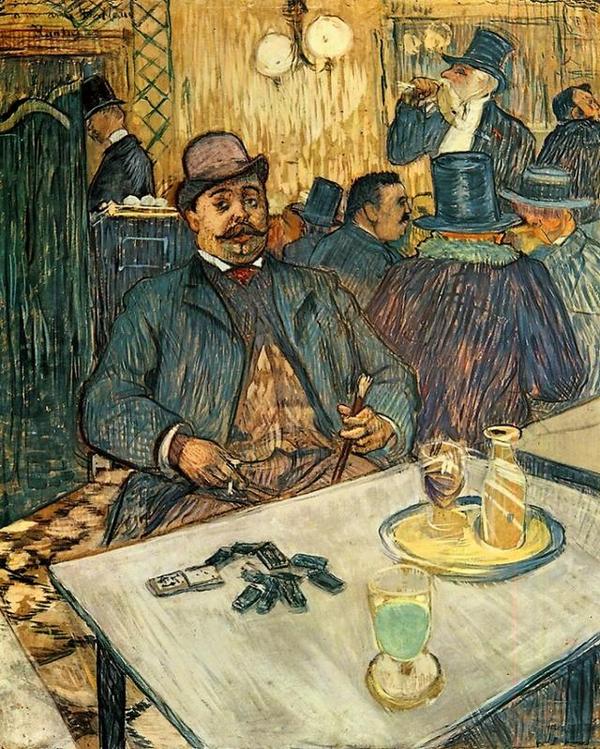
Lautrek, "Mr. Bovalo is in the Cafe."
Lautrek also watched everything in the cafe in this mixed place-he went to a cafe called Millifadon almost every day, met the once-popular dancer Gulu, and made a lot of sketches of her performance. The free and unfettered environment gives painters a broad space for creation. He observed with interest what was going on there, and then recorded incisively and vividly everything about Paris at the end of the 19th century.
3/3
Van Gogh's Cafe: very anxious.
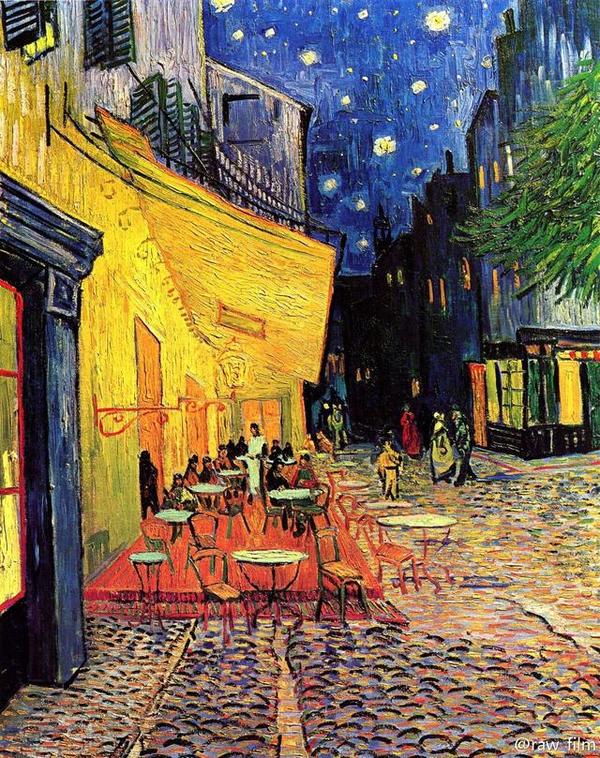
Van Gogh's Night Cafe (see watermark for source copyright)
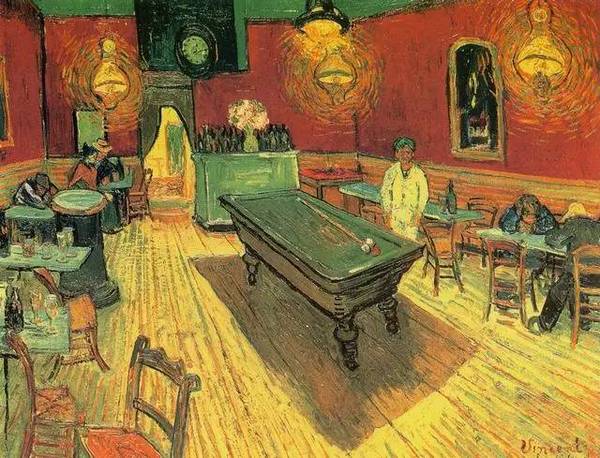
Van Gogh's "Night Cafe Room"
Xiaoyu thought that for someone like Lautrek who longed to get rid of the shackles of the bourgeois aristocracy, the free cafe must be his favorite. For people like Van Gogh who are full of infinite passion in the spiritual world and extremely scarce in the material world, the cafe must also be his favorite.
Because the cafe is different from the restaurant, it does not require high consumption, but it allows people to order a drink without pressure and wear it for an afternoon and a night. This must be wonderful for the cash-strapped Van Gogh, perhaps this cup of wine and coffee can also be on credit to the boss, such as the famous Montmartre Rabbit Bar in Paris, Picasso once gave his painting credit to the boss as wine money.
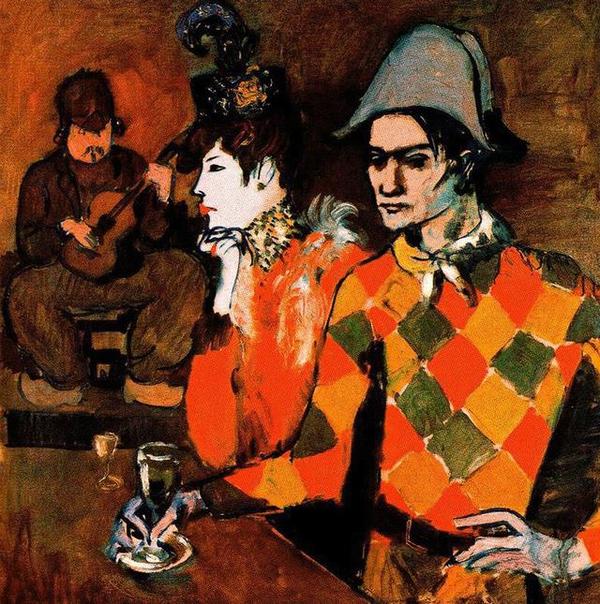
Picasso "cunning Rabbit Bar", Picasso dressed as a clown in the bar.
But even in such a relaxing cafe, van Gogh's paintings still have that eternal passion and lingering anxiety--
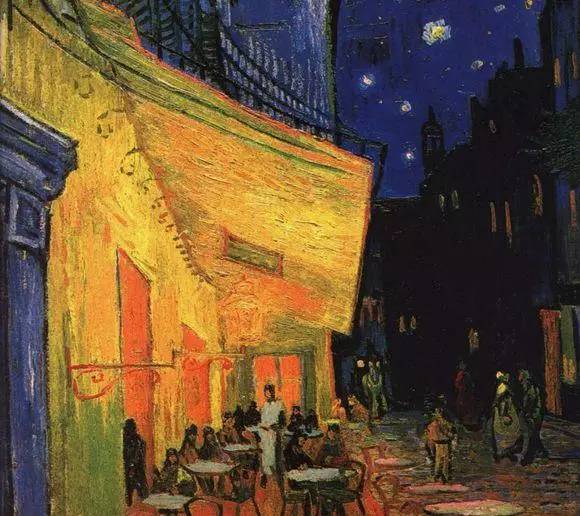
Van Gogh's "Night Cafe" partial picture, a large area of blue and yellow cold and warm complementary colors.
Van Gogh once said: "to me, night looks more dynamic and colorful than day. Painting at night, there are twinkling stars in the sky and lights on the ground. It is a very beautiful and serene work." On the other hand, the Night Cafe still uses his favorite blue and yellow as the main tone, one tells the tranquil mood, the other represents the noisy atmosphere, and it seems that Van Gogh's mood should be free and happy. Forget the loneliness of life for a while.
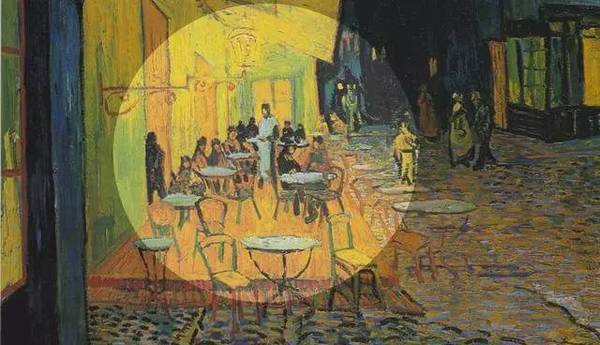
Van Gogh's "Night Cafe" partial picture, sporadic arrangement of several guests, reminds you of a painting "the Last Supper".
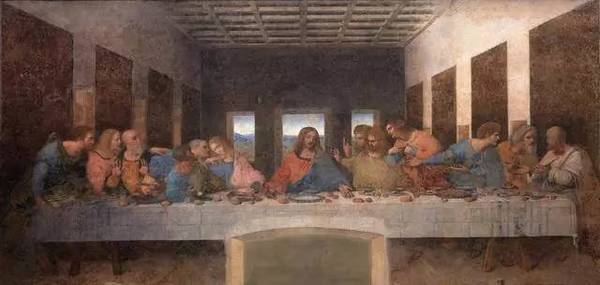
Leonardo da Vinci's Last Supper
Around the time Van Gogh wrote the Night Cafe, he wrote to his brother saying that he had a "strong desire for religion" and referred directly to the Last Supper in his letter.
In the Night Cafe, there are 11 people in the cafe and one who is getting up like a shadow through the door to leave. These 12 people happen to be like the 12 disciples of Jesus, while the one on the right is glowing golden. Looking at the 12 people under the light. The golden color at this time also has a very solemn and sacred feeling. And the golden man, who was already standing in the dark of the night, seemed to have his own light on his head, suggesting his divinity.
A coffee shop scene that should be comfortable and relaxed, but hidden divinity, I think that is also the lingering heaviness and anxiety in Van Gogh's body.
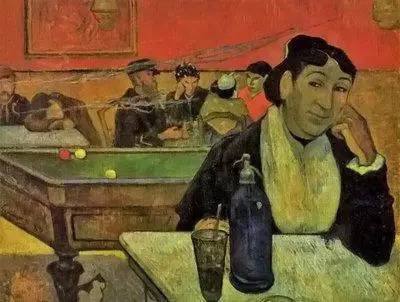
Gauguin's Night Cafe in Arles paints in the same cafe as Van Gogh.
Van Gogh's best friend, Mr. Gauguin, once painted indoor scenes in the same cafe in Arles. Gauguin showed the appearance of Mrs. Gino, the owner of the cafe, when she was drinking, with a leisurely look between her eyebrows, which became more casual in the dim light of the cafe and highlighted the night atmosphere of the cafe.
But Gauguin, who is cheerful and eloquent, paints like a gentle woman, brushes gently across the cloth, leaving a thin layer of color. Van Gogh, by contrast, is an introvert with a color knife in his hand, but pokes his emotions on the canvas.
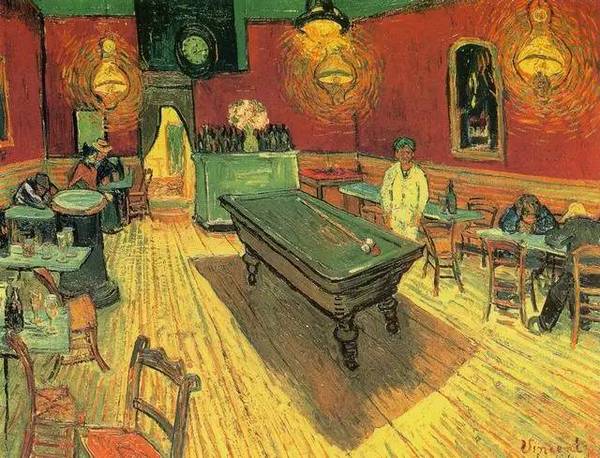
Van Gogh's "Night Cafe Room"
Compared with Gauguin, the color in Van Gogh's work is more emotional, and the color of the lights is as bright as the sun during the day. The indoor golden floor has a kind of unreal glaring feeling, showing a longitudinal and far-reaching perspective, entering the red background with irresistible force. And the red walls are strong in color, neck and neck with yellow. The use of heavy green on the zenith and table gives a strong shock in contrast, and Van Gogh once said: "I try to use red and green as a means to express the terrible passion of mankind."
The whole cafe in the painting is like a huge enclosed space. The painter once described: "I painted the Night Cafe to express the idea that the so-called cafe is a place for people to sink, go crazy and commit crimes." This painting is an irreconcilable struggle between perspective space and the intimidating colors that attempt to destroy it.
The cafe, which is obviously a relatively open and leisure place, here in Van Gogh is a terrible experience of claustrophobia, terror and oppression, with shocking power.
-
According to Feng Tang, it seems that every woman has thought about opening a cafe at some point in her life. It is best to leave the orthodox working environment, not the old land is always on the first floor or the ground floor of the office building, it is best not to be too far away from the office building, it is more than ten minutes' walk to get there, and the work is both alienated and not far away. Decoration should be interesting.
It seems that no matter what era, the kind of yearning for freedom and casual cafe complex is immortal.
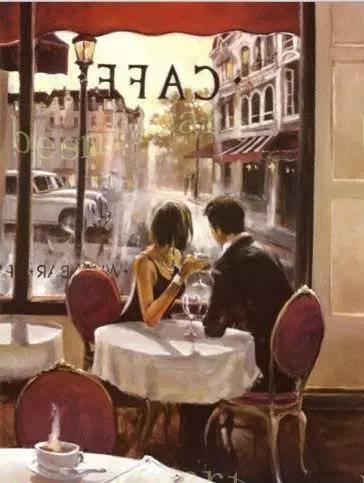
I have always loved art and you, Zhang Xiaoyu.
Important Notice :
前街咖啡 FrontStreet Coffee has moved to new addredd:
FrontStreet Coffee Address: 315,Donghua East Road,GuangZhou
Tel:020 38364473
- Prev
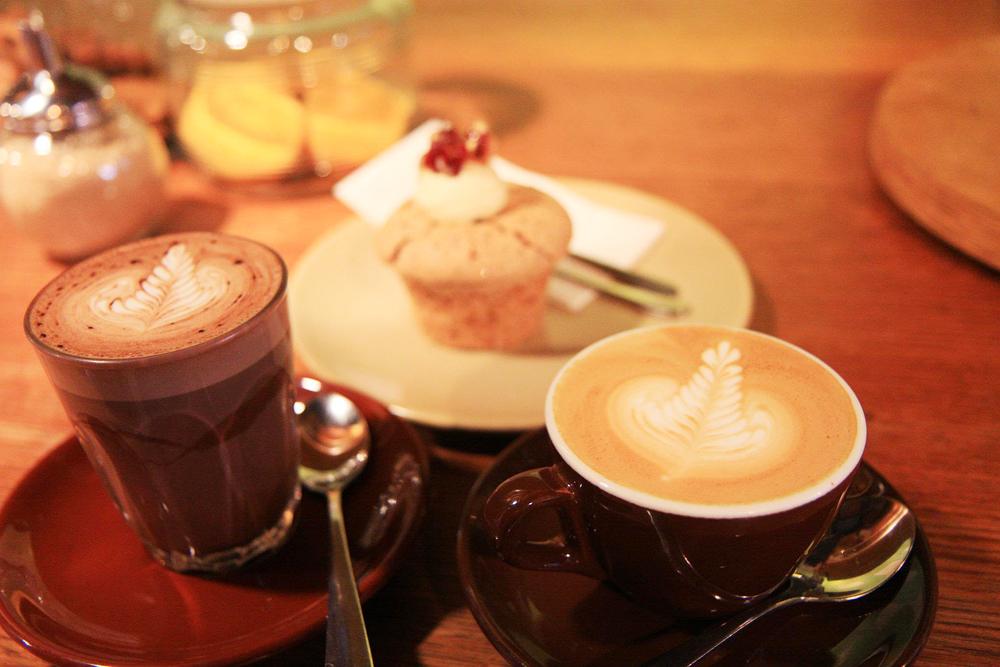
Flat White and Piccolo Latte made me addicted to coffee in Australia.
Professional baristas exchange please follow the coffee workshop (Wechat official account cafe_style) Australia opened a working holiday in Taiwan in 2004, this year is about to enter the 13th year. During the period of living in Australia, many young people from Taiwan fell in love with coffee. I am not surprised at all, because Australia has always been proud of its strong coffee culture and has even become the biggest tourist stunt in Australia.
- Next
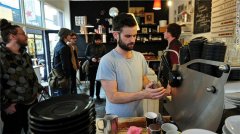
Forget Starbucks and explore the eight "Coffee cities" in the World
Professional baristas Please pay attention to the Coffee Workshop (Wechat official account cafe_style) Arabs began to grow coffee in the 15th century and were the first people in the world to grow coffee. However, it was the French who made the world's first coffee machine in 1843. Coffee has experienced several leaps and bounds since then. People begin to pay more and more attention to the origin of coffee beans,
Related
- How did the Salvadoran coffee industry develop in Central America?
- What exactly does the golden cup extraction of coffee mean?
- The Origin of Coffee flower
- [2023 Starbucks World Earth Day] there are more meaningful things besides free Starbucks coffee!
- What kind of coffee is there in Spain? 9 Flavors of Spanish Coffee
- Aromatic African coffee| Kenya's coffee culture and historical production area
- Liberica Coffee Bean knowledge: the characteristics of Liberian Coffee beans of the three original species of Coffee beans
- The origin and formula of Spanish latte introduces the taste characteristics of Bombon coffee in Valencia, Spain.
- How to adjust the solution of over-extracted coffee
- What is the tasting period of coffee beans? What is the period of coffee and beans? How should coffee wake up and raise beans?

